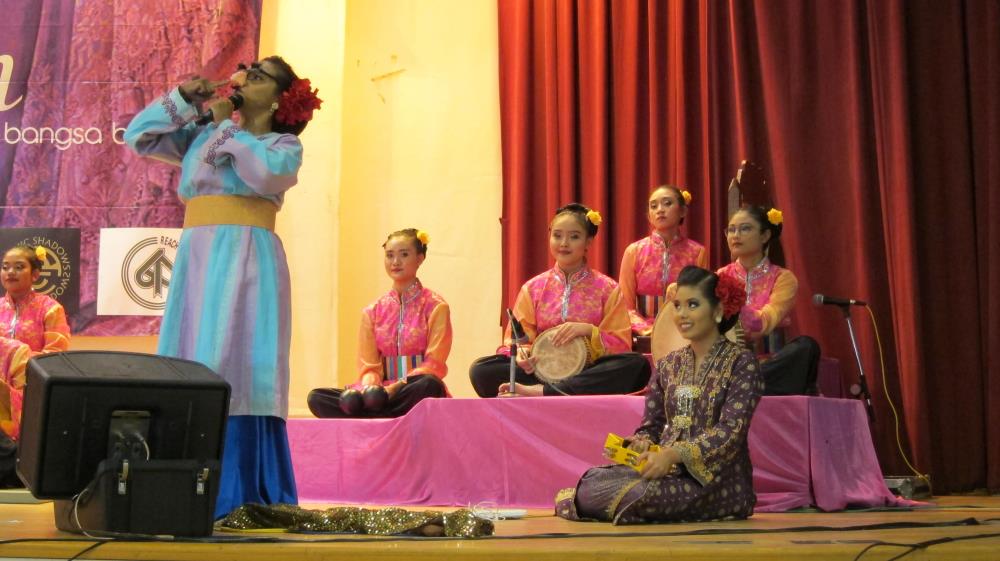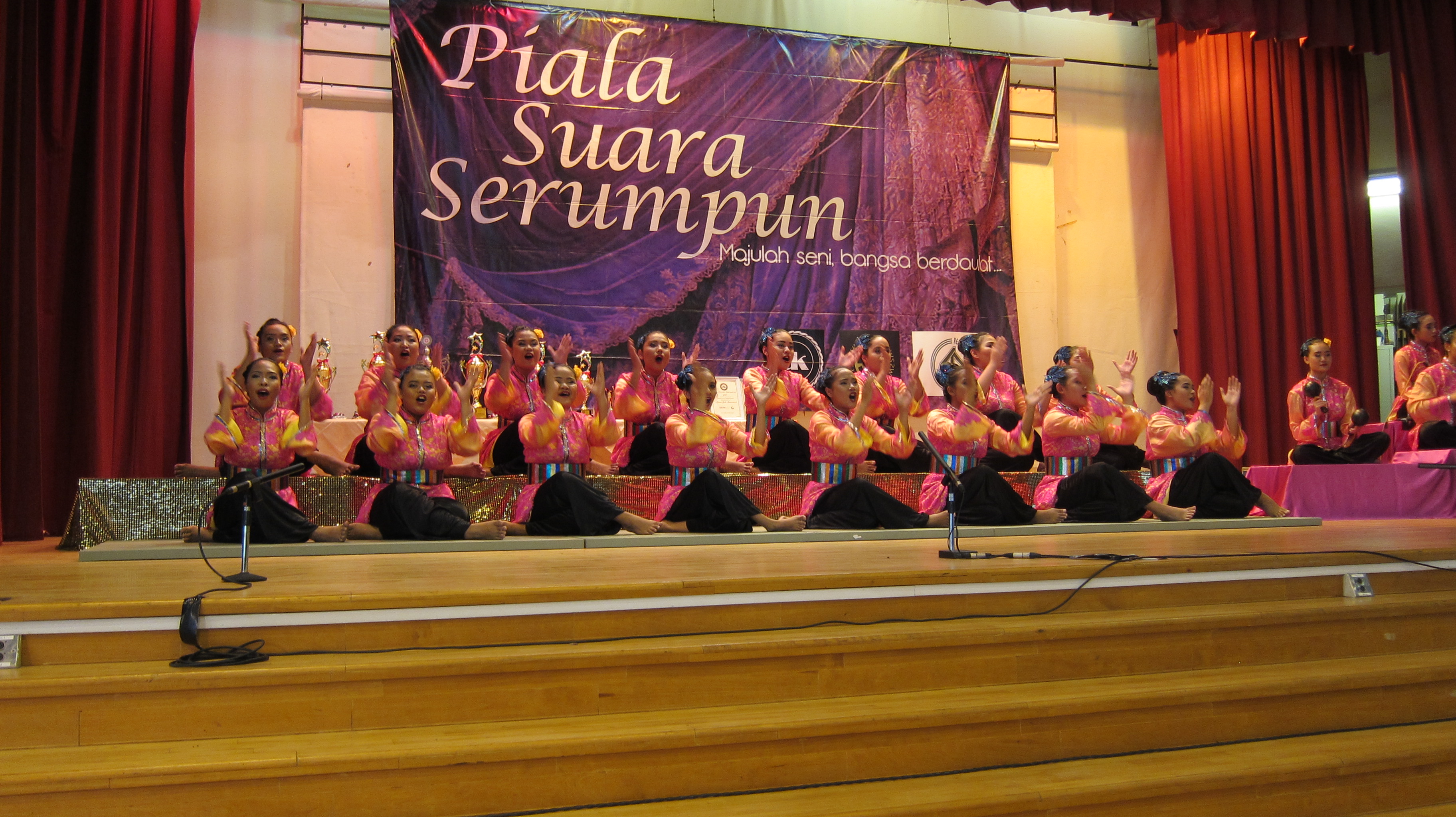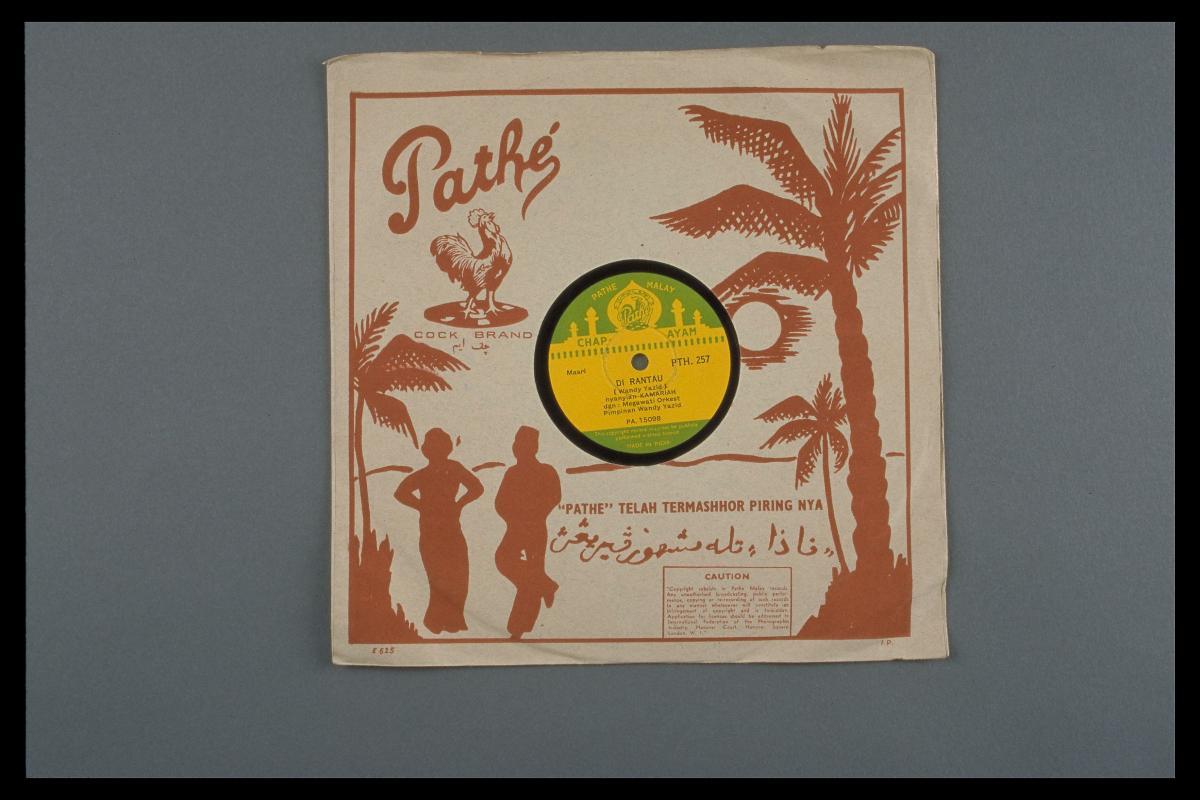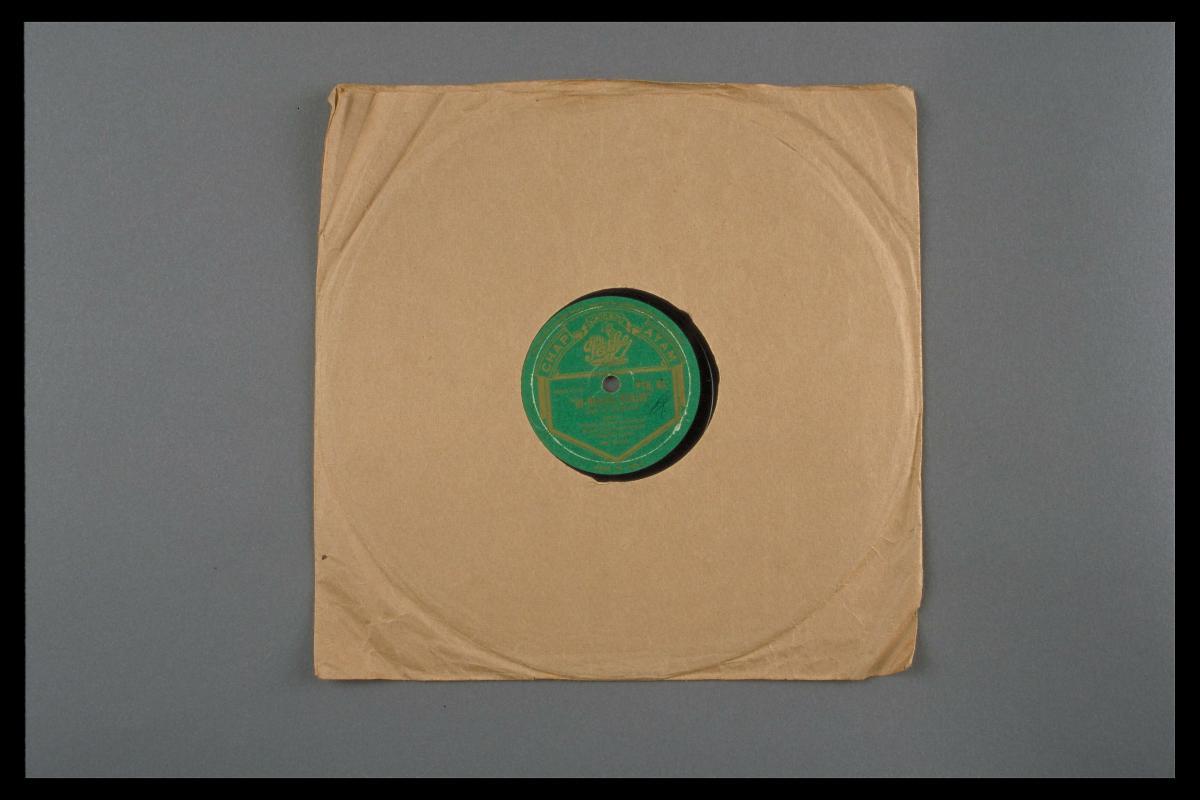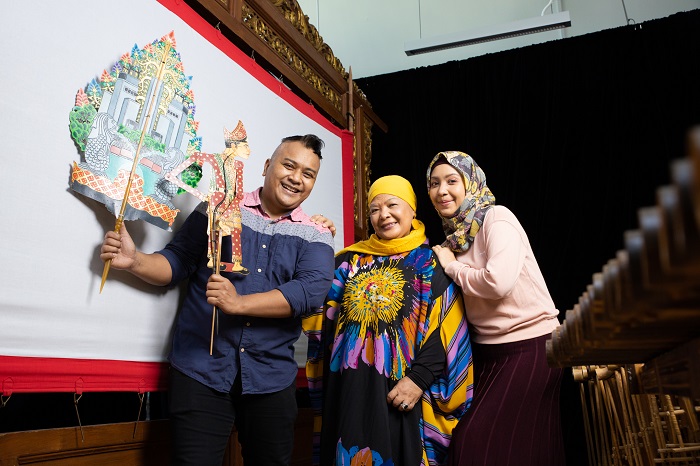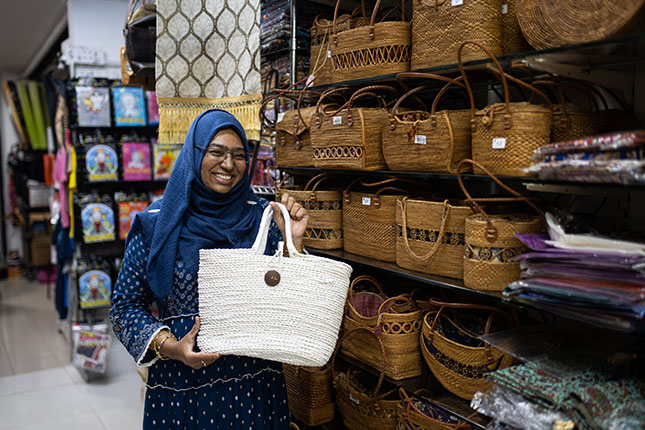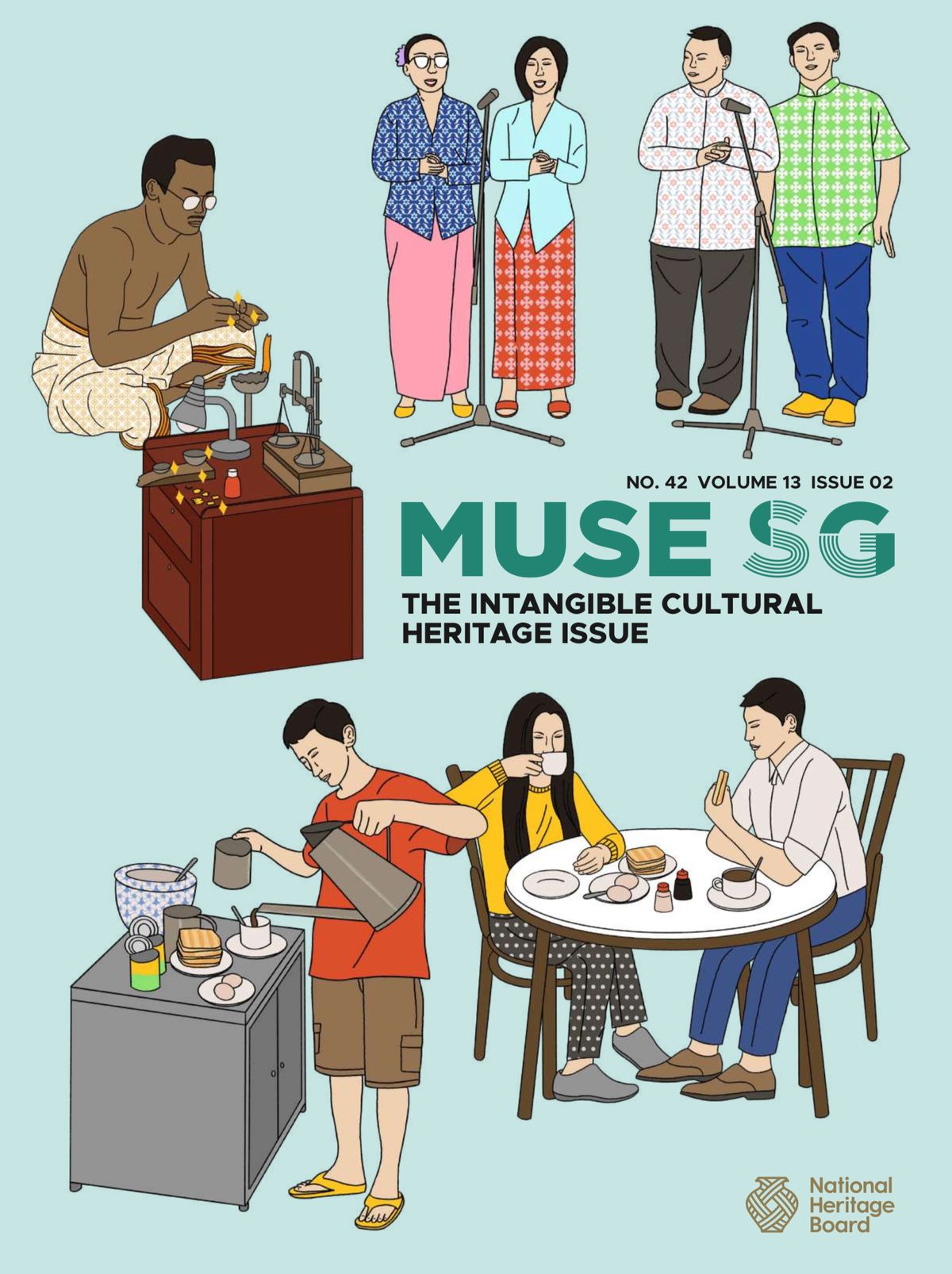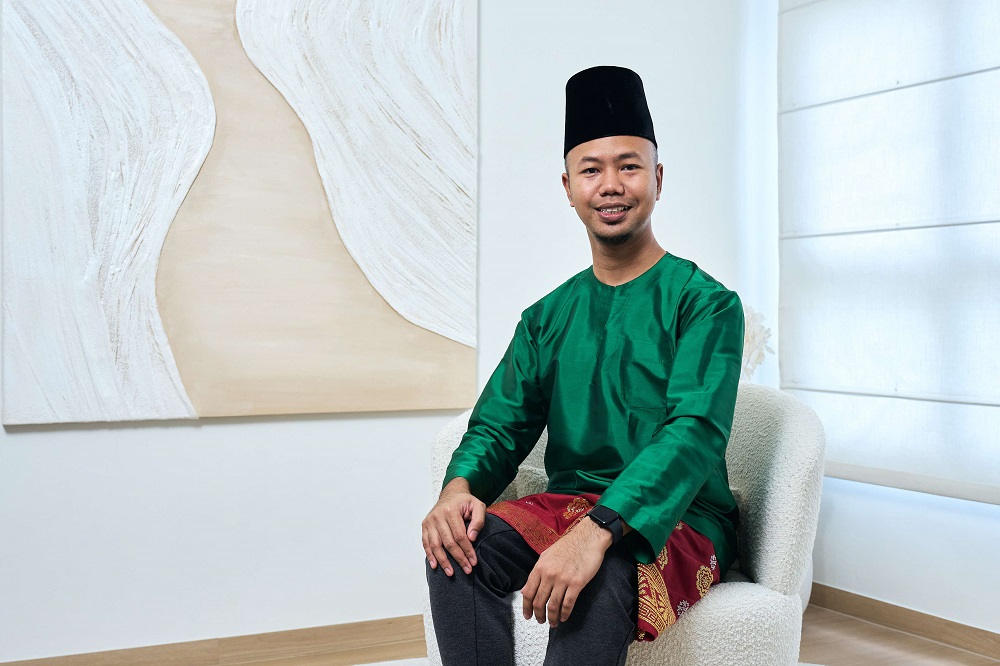Dikir Barat
Dikir barat is a popular source of entertainment for the Malay community in Singapore. Traditionally a choral ensemble, a dikir barat group typically comprises a tok juara (lead vocalist), a tukang karut (jester), an awok-awok (chorus) of 12–16 persons, and a percussion ensemble of musicians playing the drums, gong, gong-chime, maracas, and sometimes a bamboo flute. The leader of the group is usually the tukang karut.
During performances, a group’s repertoire opens with tepuk sepuluh (introductory clapping), which sets the tone of the performance, then the lagu juara (opening song), which showcases the tok juara’s vocal talents. This is followed by the karut kelantan (segue) into the karut pattani (call and response). Next, the tok juara picks up with the karut yankee (upbeat, catchy song), which has a faster tempo, making it the most upbeat part of the performance. Finally, variations of the wau bulan (song of the moon kite) mark the end of the performance. Song lyrics are usually composed by the tukang karut, who uses an allegorical and allusive style for the lagu juara, and a more direct and incisive style for the tukang karut’s parts.
Geographic Location
This secular art form originates from Kelantan, Malaysia, and is derived from Muslim sufi dhikr practices from Pattani, Thailand, in the early 20th century. Today in Singapore, dikir barat is performed during Malay weddings and festivals, and competitions are frequently held.
Communities Involved
Dikir barat has a large following in Singapore, in terms of practitioners and audiences. There is a thriving dikir barat competitive scene, with about 70-90 active troupes.
Many dikir barat groups start out from, or are funded by, educational institutions and community centres. As performances are segregated by gender, there are usually separate male and female groups. Members of dikir barat groups are largely youths and working adults. Despite holding full-time jobs, many members report feeling connected to and invested in dikir barat. Hence, they make time for the long hours of practice needed. Dikir barat is also enjoyed by multi-ethnic audiences from various walks of life, especially when it is performed at outreach events.
Associated Social and Cultural Practices
Dikir barat in Singapore has evolved from the original form practised in Kelantan, and developed into its own style of performance. Traditionally, performances in Kelantan were held during rural harvest festivals and explored domestic issues like courtship and folk wisdom. As populations became urbanised, topics such as work, urban alienation, and politics emerged. However, performance themes in Singapore mainly revolve around cultural issues and civic virtues such as racial harmony. Furthermore, the performance form in Kelantan is primarily focused on the tukang karut. In Singapore, however, the awok-awok’s “moves”, percussion ensemble’s synchronicity, and overall factors like a group’s visual presentation, are just as important. Finally, while “freestyle” or impromptu dikir barat was part of the original art form in Kelantan, it is uncommon in Singapore, where performers usually memorise the lyrics.
Performances are typically carried out in the Malay language, and include Malay poetic forms, such as the syair and the pantun. Performances for the general public are occasionally done in English to allow non-Malay speakers to appreciate this art form.
Experience of a Practitioner
The Singapore Dikir Barat Federation, known as GABUNGAN, plays an important role in nurturing the art form. It organises Mega Perdana, widely seen as the most prestigious dikir barat competition here, once every two years. GABUNGAN also organises seminars and workshops to train dikir barat instructors, and promotes the art form in schools and institutions, says Ms Juwita Samat. Competitions organised by community centres and tertiary institutions contribute to vibrancy of dikir barat.
Watch: Dikir Barat
In addition, the popularity and reach of dikir barat within the Malay-speaking media and community is strong. Studio recordings of dikir barat songs and corresponding CD anthologies have been successfully produced and are played by the local radio station Ria 89.7. The finale of Mega Perdana has been regularly broadcasted on the TV channel Suria since 2000.
With such copious amounts of reference materials available, new practitioners can easily be introduced to dikir barat. There are no specific skill sets required to pick up the art, other than a desire to learn, says Ms Juwita. However, it may take some time to cultivate the skills for the informal leadership roles like the tukang karut.
Present Status
Dikir barat is likely to continue thriving in Singapore, says Ms Juwita. However, she hopes that dikir barat will be appreciated not just as a cultural artefact, but also for its artistic merits. Ms Juwita feels strongly that dikir barat has developed its own distinctive Singaporean flair, and possesses great cultural value. The Singaporean dikir barat is, to her, worth safeguarding for the future. Ms Juwita takes pride in her role in passing on the baton.
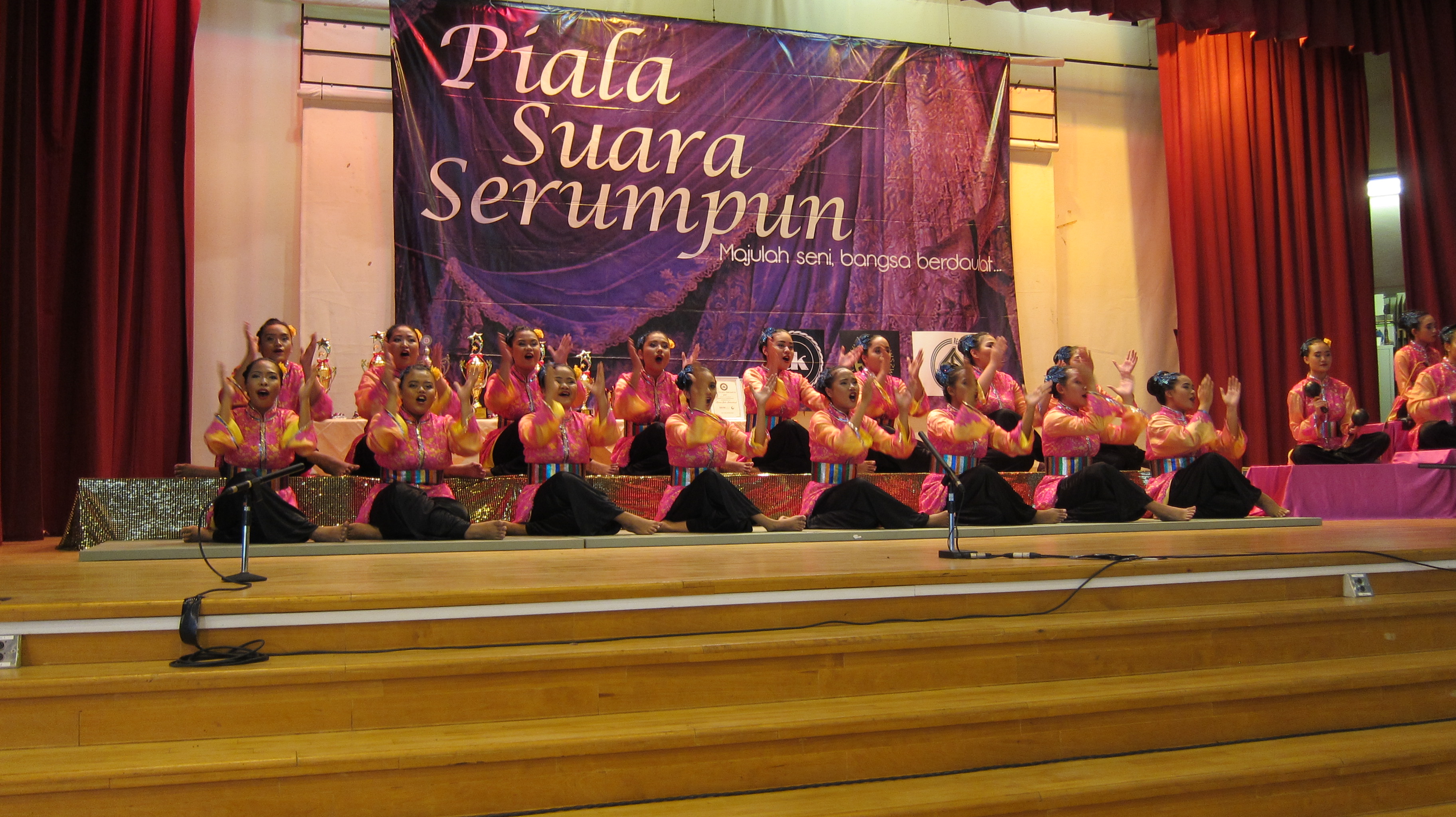
References
Reference No.: ICH-004
Date of Inclusion: April 2018; Updated March 2019
References
Brennan, Carolyn. “Religion, cultural identity, and Kelantan’s Dikir Barat.” The Australian Journal of Anthropology, 12 (3): 302-311, 2001.
Chong, Sylvia. “Music links A music ensemble outreach programme for schools.” International Journal of Community Music, 4 (1): 39-46, 2011.
Osman, Sharifah Masturah Bte Syed. “Dikir Barat in Kelantan and Singapore: Looking beyond its superficiality.” National University of Singapore, Department of Malay Studies. Unpublished Honours Thesis, 1998.
Rashid, Yaakub. “Songs for the common folk.” The Straits Times, 15 May 1991.
Singapore Dikir Barat Federation. www.dikirbarat.com. Accessed 28 July 2017.




